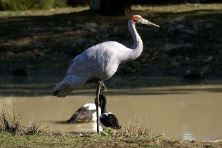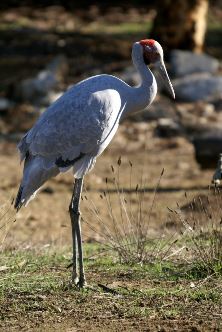
Shoppers Feedback:
Jan 17, 2017
Hello Ros,
I have now paid the invoice, but I would like to write to you just to say a big THANK YOU for getting me the Penguin!
The ChatterMate Penguin became a nice memory for me when I was in New Zealand, and I am so greatful to you for arranging so that I could have it! :-)
Thank you so much!!!!!!!!!!!
Regards,
Malin
Hi Ros,
Many thanks for your very kind email. I really appreciate your prompt reply!
I appreciate your advice regarding the decorations and customs. These are a gift for my daughter’s exchange student family so when she returns home on the weekend I will show her and see if she loves them as much as I do!
Thanks so very much again - I am truly grateful for your kind assistance.
Kind Regards
Bernadette
Ros,
Thanks again for the great customer service. It's a refreshing change!
Best regards,
Trevor
Hey Roz,
Thank you for your emails. Just loved my first order. The cute little Aussie bush critters are going to be used for an office Christmas decoration. My colleagues also liked them and talked about making an order to your site. I'll send you a photo when completed.
I'll be ordering more to send to my daughter's host family in America.
Fabulous service from you.
Kind regards,
Michelle
Thankyou. Order arrived today. One very happy grandson with his new beastly binoculars.
Regards,
Irene
- Home
- Wild Wonders
- Shop
- Aromas of Australia
- Australian Made
- Books
- Book Marks
- Christmas Decoration Sale
- Christmas Decorations
- Clocks
- Drink Holders
- Garden & Outdoor
- Gift Wrapping & Cards
- Home & Giftware
- Jewellery
- Keyrings
- New Products
- Pencils & Pen Holders
- Photo Frames
- Plush Toys
- Plush with Sound
- Sheepskin Rugs
- Stationery
- Stone Carvings
- Toys & Games
- Travel Goods
- Wedding
- Wild Figurines
- Wildlife Safety Products
- Wind Chimes
- Wine Charms
- View All Products
- Wildlife
- Australiana
- Explore
- Contact Us

Quick Facts
| Length: | - |
| Height: | 112 cm |
| Weight: | - |
| Colour: | Grey |
| Habitat: | Open wetlands, grassy plains, coastal mudflats. Occassionally found in mangrove creeks and estuaries |
| Food: | Omnivorous (vegetable and plant). Primary food is tubers and some crops, insects, molluscs, amphibia |
| Predators: | - |
| Status: | Secure in NT, QLD, WA. Vulnerable in NSW, SA and Vic. Not present in Tasmania |
The Brolga is a large grey crane, with a featherless red head and grey crown. The legs are grey and there is a black dewlap under the chin. Females are shorter than males. The energetic dance performed by the Brolga is a spectacular sight. Displays may be given at any time of the year and by birds of any age.
The Sarus Crane, another species of crane found in Australia, can be identified by its dull pink legs and the red of its head extending down the neck.
The Brolga is found across tropical northern Australia, southwards through north-east and east central areas, as well as central New South Wales to western Victoria.
The Brolga inhabits large open wetlands, grassy plains, coastal mudflats and irrigated croplands and, less frequently, mangrove-studded creeks and estuaries. It is less common in arid and semi-arid regions, but will occur close to water.
Outside the breeding season, Brolgas form large family groups and flocks of up to a hundred birds. These groups may be partially nomadic or may stay in the same area. Some birds also migrate northwards.
Brolgas are omnivorous (feeding on both vegetable and animal matter), but primarily feed upon tubers and some crops. Some insects, molluscs, amphibians and even mice are also taken.
Brolgas probably mate for life, and pair bonds are strengthened during elaborate courtship displays, which involve much dancing, leaping, wing-flapping and loud trumpeting. An isolated territory is established, and is vigorously defended by both partners. The white (blotched with brown and purple) eggs are laid in a single clutch. The nest is a large mound of vegetation on a small island in a shallow waterway or swamp. Both adults incubate the eggs and care for the young birds.
Within New South Wales, Brolga numbers have been much reduced because of widespread drainage of suitable habitat for agriculture, land reclamation and water regulation, but birds are still common and widespread throughout Australia's north.
Last Updated: Thursday 9th January, 2014
BUSH e-TELEGRAPH
Signup for our monthly newsletter the "e-Telegraph"
Quick Links
Home | The Beginning | About The Land Down Under | Wild Wonders | Advertise on Wild Wonders | Christmas Decoration Sale | Christmas Tree Decorations | Drink Holders | Plush with Sound | Stone Carvings | Wildlife Wine Charms | Freebies | Australian Wildlife | Help Our Wildlife | Australiana | Photo of the Month | Explore The Land Down Under | Contact Us | Legal Notices


